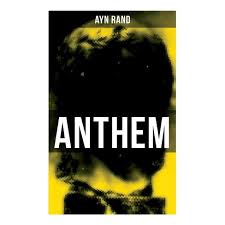PART 6
byPart 6 begins with the return of Equality 7–2521 to his journal after thirty days, marking the consequences of a decision that placed him in opposition to the laws of his society. He had not attended the mandatory social gathering at the City Theatre, choosing instead to continue work on his private discovery. His absence did not go unnoticed. Questioned by the Council at the Home of the Street Sweepers, he declined to share where he had been. In this simple act of refusal, he committed a bold act of rebellion. The statement “We will not tell you” became more than defiance—it became a line that could not be crossed. As punishment, he was sent to the Palace of Corrective Detention.
The detention center was a stark, brutal place designed not just to imprison, but to break the will. Its iron post, placed for public whippings, was the centerpiece of its function. Equality 7–2521 was tied and whipped, the pain described in waves—first sharp and clear, then dull and exhausting, only to rise again. Through it all, he remained silent. His lips did not part, though every nerve burned. The interrogator’s voice, repeating “Where have you been?” became distant, as if the question mattered less than the idea he was protecting. He clung to the thought of the light. It was not just a device; it was a symbol of discovery, independence, and his right to know and create.
His body, after the punishment, struggled to heal. His cell, dark and windowless, gave him no comfort. There were no clocks, no visitors—just the occasional delivery of bread and water. Guards came, faces stern and voices sharp, expecting confession. But he offered nothing. Not out of pride, but conviction. He knew what he had discovered had meaning beyond himself. It did not belong to the world of silence and sameness. It belonged to the world of thought and freedom, which he had only begun to glimpse.
Inside that narrow space, another transformation took place. His mind did not idle. It wandered through the structure of the glass box he had built, retracing its circuits, its coils, its pulse. The light lived within him now as much as in the invention itself. He did not mourn the beatings. Instead, he felt a quiet triumph. His captors had power over his body but not over the idea he had created. The thought gave him strength.
The Palace of Corrective Detention existed as a place of fear, where rules were enforced through pain and silence. But for Equality 7–2521, it became a place of choice. He chose to remain silent. He chose not to give up the truth. That power, the power to choose, was his alone. The others could not see that his refusal was not weakness. It was the beginning of something larger than himself. Something that would not be chained or silenced.
His wounds healed, slowly and with effort. Each time he stood, it hurt. But he welcomed the ache. It reminded him that he had endured, that his body still belonged to him. His thoughts were no longer tethered to guilt or fear. He began to plan again, not escape, but what he would do when free. The light was waiting. Not just as a machine, but as a purpose.
The silence that filled his cell was not empty. It was full of possibilities. Ideas bloomed where pain had once resided. He knew that when he returned to the tunnel, he would not be the same. What he had suffered would become the foundation of his strength. He would not hide anymore. The time of secrecy would end.
This part of the story illustrates that sometimes strength is not measured by might, but by resolve. The whips of the Council had failed to change his course. They only clarified it. He realized now that the greatest weapon he held was not the light itself, but the freedom of his mind. And that freedom could never be beaten from him. The journey ahead would be harder still, but it would be chosen, not assigned. And for the first time, that choice belonged entirely to him.

